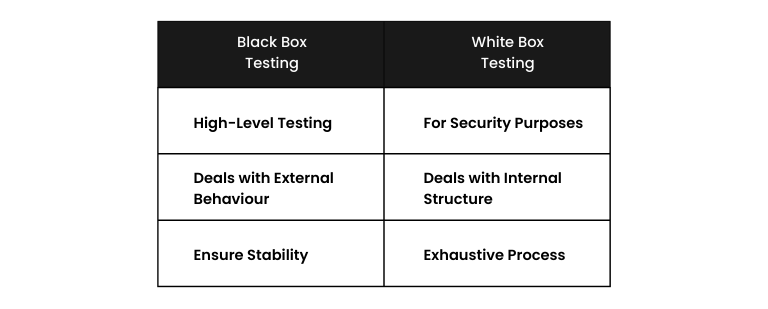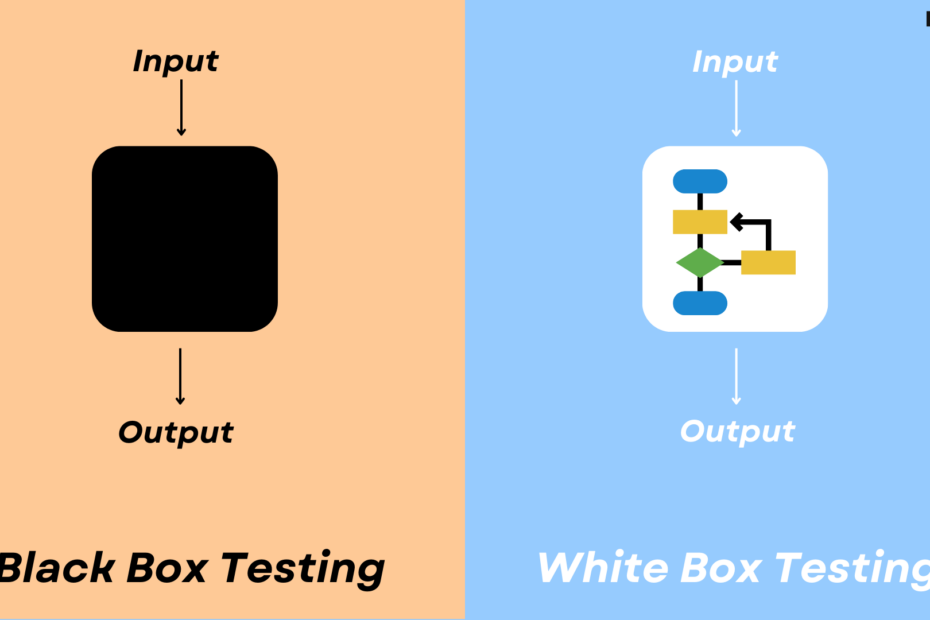Software testing is a critical aspect of the development lifecycle, ensuring the quality, functionality, and reliability of software applications. Two fundamental testing methodologies are black box testing and white box testing. These methodologies differ significantly in their approaches, objectives, and techniques. This article explores the key differences between black box and white box testing, their advantages, disadvantages, and appropriate use cases.
Black Box Testing
Black box testing, also known as behavioral or functional testing, focuses on verifying the software’s functionality without any knowledge of the internal code structure. Testers evaluate the system based on its requirements and specifications, treating it as a “black box” that produces outputs in response to inputs.
Approach:
- Testers provide inputs and observe outputs.
- Tests are based on requirements, specifications, and user stories.
- No knowledge of the internal workings of the application is required.
Techniques:
- Equivalence Partitioning: Dividing input data into equivalent partitions to reduce the number of test cases.
- Boundary Value Analysis: Testing at the boundaries between partitions.
- Decision Table Testing: Using a table to represent combinations of inputs and their corresponding outputs.
- State Transition Testing: Testing state changes based on different events.
Advantages:
- User Perspective: Simulates real user scenarios, ensuring the software meets user expectations.
- Unbiased Testing: Testers are not influenced by the code, focusing solely on functionality.
- Efficiency: Can be performed early in the development cycle, even without the final code.
Disadvantages:
- Limited Coverage: May not cover all possible paths or internal code logic.
- Inefficiency for Complex Systems: Large and complex systems
may require extensive and detailed test cases to cover all functionalities, making black box testing less efficient.
White Box Testing
White box testing, also known as structural, clear box, or glass box testing, involves testing the internal structures, logic, and code of the software. Testers have full visibility into the codebase and design tests to verify the internal operations and specific paths within the application.
Approach:
- Testers examine the code and design tests based on the internal logic.
- Tests are derived from the code structure, algorithms, and data flow.
- Requires knowledge of programming and the application’s internal architecture.
Techniques:
- Statement Coverage: Ensuring every line of code is executed at least once.
- Branch Coverage: Testing all possible paths, including decision points.
- Path Coverage: Verifying all possible paths through the code.
- Control Flow Testing: Analyzing the control flow of the program to identify and test different paths.
Advantages:
- Thoroughness: Provides comprehensive coverage of the code, ensuring that all paths and branches are tested.
- Optimization: Helps identify inefficient code, dead code, and security vulnerabilities.
- Early Detection: Can detect issues early in the development cycle, reducing the cost of fixing bugs.
Disadvantages:
- Complexity: Requires a deep understanding of the code, which can be time consuming and complex.
- Maintenance: Tests need to be updated with code changes, leading to higher maintenance efforts.
- Limited User Perspective: Focuses on the code rather than the user experience, potentially missing functionality issues that affect end users.

Key Differences
Focus and Objective:
- Black Box Testing: Focuses on validating functionality against requirements without knowing the internal code.
- White Box Testing: Focuses on the internal workings and logic of the code, ensuring the implementation meets the specifications.
Knowledge Requirement:
- Black Box Testing: Requires no knowledge of the internal code or architecture.
- White Box Testing: Requires detailed knowledge of the internal code and programming skills.
Test Design:
- Black Box Testing: Tests are designed based on requirements and user stories.
- White Box Testing: Tests are designed based on the code structure, logic, and flow.
Coverage:
- Black Box Testing: May not cover all code paths and internal logic.
- White Box Testing: Aims to cover all possible paths, branches, and statements within the code.
Tools and Techniques:
- Black Box Testing: Utilizes techniques like equivalence partitioning, boundary value analysis, and decision tables.
- White Box Testing: Employs techniques like statement coverage, branch coverage, and control flow analysis.
Use Cases
Black Box Testing is ideal for:
- Functional testing
- User acceptance testing (UAT)
- Regression testing
- System testing
White Box Testing is ideal for:
- Unit testing
- Integration testing
- Code optimization
- Security testing
Enozom, is a software development company, excels in delivering high quality software solutions through rigorous testing methodologies, including both black box and white box testing. In the software development, Enozom employs black box testing to ensure their applications meet user requirements and function correctly without the need for testers to understand the underlying code. This user focused approach helps simulate real world scenarios and validates the software against specified requirements. Simultaneously, Enozom utilizes white box testing to thoroughly examine the internal structures and logic of the code, ensuring all paths and branches are correctly implemented and optimized. By integrating both black box and white box testing techniques, Enozom ensures comprehensive coverage, early bug detection, and high reliability, delivering robust and efficient software solutions to their clients.
Conclusion
Both black box and white box testing are essential methodologies in software testing, each serving distinct purposes and complementing each other. Black box testing ensures the software meets user expectations and requirements, while white box testing ensures the code is robust, efficient, and secure. A balanced combination of both approaches provides comprehensive test coverage, enhancing the overall quality and reliability of the software.
